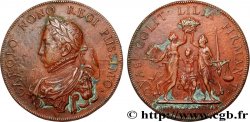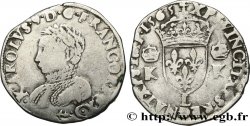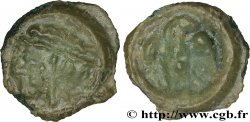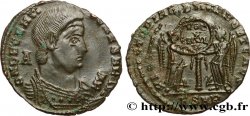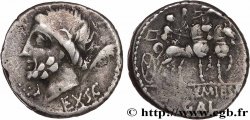fme_744327 - CHARLES IX Médaille, Charles IX et Catherine II de Médicis, frappe moderne
100.00 €(Approx. 117.00$ | 87.00£)
Quantity
Add to your cart

Type : Médaille, Charles IX et Catherine II de Médicis, frappe moderne
Date: (1565)
Metal : copper
Diameter : 37,5 mm
Orientation dies : 12 h.
Weight : 24,22 g.
Edge : lisse
Puncheon : sans poinçon
Coments on the condition:
Jolie patine marron avec des traces de manipulation dans les champs. Petite usure sur certains reliefs
Predigree :
Cet exemplaire provient de la collection Marineche
Obverse
Obverse legend : CAROLVS IX GALLIARVM REX CHRISTINAIS 1565.
Obverse description : Buste lauré, drappé et cuirassé de Charles IX à droite.
Reverse
Reverse legend : KATHARI. REGIN. HENRI. II. VXOR. FRANCIS. ET CAROL. REGVM MATER.
Reverse description : Buste à gauche de Catherine II.
Commentary
Catherine de Médicis est plutôt associée à Henri II qu’à Charles IX sur les médailles de ce genre.
Elle est née le 13 avril 1519 à Florence (République florentine) sous le nom de Caterina Maria Romola di Lorenzo de' Medici et morte le 5 janvier 1589 à Blois (France).
Fille de Laurent II de Médicis (1492-1519), duc d'Urbino, et de Madeleine de la Tour d'Auvergne (1495-1519), elle grandit en Italie d'où elle est originaire par son père. À la mort de ses parents, elle hérite du titre de duchesse d'Urbino, puis de celui de comtesse d'Auvergne à la mort de sa tante Anne d'Auvergne en 1524.
Par son mariage avec le futur Henri II, elle devient Dauphine et duchesse de Bretagne de 1536 à 1547, puis reine de France de 1547 à 1559. Mère des rois François II, Charles IX, Henri III, des reines Élisabeth (reine d'Espagne) et Marguerite (dite « la reine Margot », épouse du futur Henri IV), elle gouverne la France en tant que reine-mère et régente de 1560 à 1563..
Catherine de Medici is associated with Henry II rather than Charles IX on medals of this type. She was born on April 13, 1519 in Florence (Florentine Republic) under the name of Caterina Maria Romola di Lorenzo de' Medici and died on January 5, 1589 in Blois (France). Daughter of Lorenzo II de Medici (1492-1519), Duke of Urbino, and Madeleine de la Tour d'Auvergne (1495-1519), she grew up in Italy where she was originally from on her father's side. Upon the death of her parents, she inherited the title of Duchess of Urbino, then that of Countess of Auvergne upon the death of her aunt Anne of Auvergne in 1524. Through her marriage to the future Henry II, she became Dauphine and Duchess of Brittany from 1536 to 1547, then Queen of France from 1547 to 1559. Mother of Kings Francis II, Charles IX, Henry III, Queens Elizabeth (Queen of Spain) and Margaret (known as \\\"Queen Margot\\\", wife of the future Henry IV), she governed France as queen mother and regent from 1560 to 1563.
Elle est née le 13 avril 1519 à Florence (République florentine) sous le nom de Caterina Maria Romola di Lorenzo de' Medici et morte le 5 janvier 1589 à Blois (France).
Fille de Laurent II de Médicis (1492-1519), duc d'Urbino, et de Madeleine de la Tour d'Auvergne (1495-1519), elle grandit en Italie d'où elle est originaire par son père. À la mort de ses parents, elle hérite du titre de duchesse d'Urbino, puis de celui de comtesse d'Auvergne à la mort de sa tante Anne d'Auvergne en 1524.
Par son mariage avec le futur Henri II, elle devient Dauphine et duchesse de Bretagne de 1536 à 1547, puis reine de France de 1547 à 1559. Mère des rois François II, Charles IX, Henri III, des reines Élisabeth (reine d'Espagne) et Marguerite (dite « la reine Margot », épouse du futur Henri IV), elle gouverne la France en tant que reine-mère et régente de 1560 à 1563..
Catherine de Medici is associated with Henry II rather than Charles IX on medals of this type. She was born on April 13, 1519 in Florence (Florentine Republic) under the name of Caterina Maria Romola di Lorenzo de' Medici and died on January 5, 1589 in Blois (France). Daughter of Lorenzo II de Medici (1492-1519), Duke of Urbino, and Madeleine de la Tour d'Auvergne (1495-1519), she grew up in Italy where she was originally from on her father's side. Upon the death of her parents, she inherited the title of Duchess of Urbino, then that of Countess of Auvergne upon the death of her aunt Anne of Auvergne in 1524. Through her marriage to the future Henry II, she became Dauphine and Duchess of Brittany from 1536 to 1547, then Queen of France from 1547 to 1559. Mother of Kings Francis II, Charles IX, Henry III, Queens Elizabeth (Queen of Spain) and Margaret (known as \\\"Queen Margot\\\", wife of the future Henry IV), she governed France as queen mother and regent from 1560 to 1563.







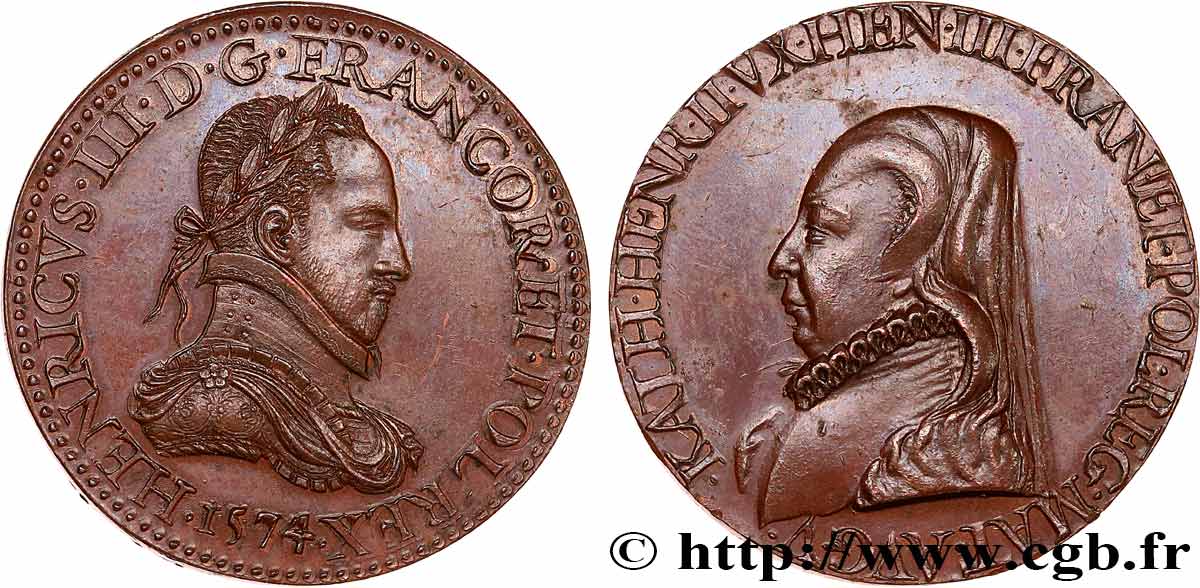
 Report a mistake
Report a mistake Print the page
Print the page Share my selection
Share my selection Ask a question
Ask a question Consign / sell
Consign / sell
 Full data
Full data

